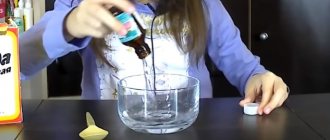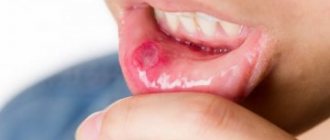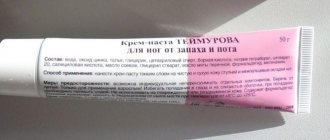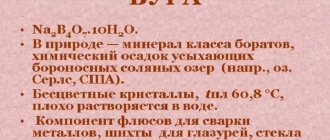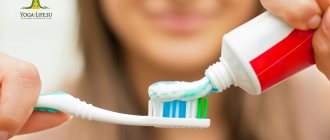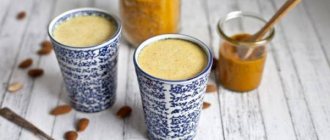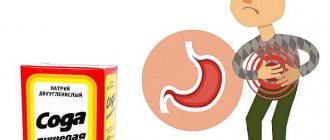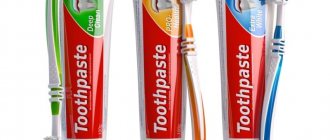Slime, hand chewing gum, slime, handgam or “anti-stress” toy, as you name it, is a sticky substance that appeals to children due to its soft texture and attractive appearance. A budget option is to make a jelly-like substance at home, implementing the idea and putting in the effort. A very young child can resort to the help of an adult. The older ones can cope on their own, giving mom an hour of rest.
Sodium tetraborate base
The inorganic boron compound (Na2B4O7) is widely used in medicine, the chemical industry, cosmetology and food production, and now in the manufacture of toys. Auxiliary components change, and the technological process cannot be completed without sodium tetraborate, which is freely sold in pharmacies and acts as a thickener.
Borax has become in demand, and products based on it are modified and supplemented with simple recipes that are accessible even to children. Their selection will help make slime from sodium tetraborate and show the creative inclinations of young “chemists”, and will significantly save the family budget.
What is the activator for slime?
A slime activator, also known as a thickener, is added during the slime creation process to improve its properties. Due to a chemical reaction, the liquid slime curdles and thickens; later it becomes more convenient to play with it. To make the slime the right consistency, you need to find out which ones are suitable and choose the right activator.
Activators come in different forms: both in the form of a liquid gel and in the form of a powder or spray. The spray is most convenient to use; you just need to spray it on the slime several times. Solutions are more easy to handle, and powder, in turn, can be found in almost any kitchen.
Attention! When making slime, adding a thickener is mandatory, since it determines whether the toy will be dense and elastic, or will spread in your hands.
Original slime
The classic version includes only two components. It will take no more than a minute to implement the idea.
Compound:
- PVA glue (100 ml);
- sodium tetraborate (a few drops).
Recipe:
- In a convenient plate, combine the base with the thickener and mix vigorously. Add tetraborate drop by drop to achieve the desired consistency.
- Take the raw material in your hands when it starts to detach from the walls and knead it.
Sodium tetraborate can be replaced with lens fluid. You need to buy a high-quality adhesive base, and it is best to store the substance in the refrigerator. The classic version of “Velcro” assumes naturalness, but if you want to be spectacular and original, use paint or nail polish of any color.
What to do if the slime does not thicken
If the slime does not work out, this may be caused by the following factors:
- Insufficient mixing. The slime should not only be mixed with a spoon, but also thoroughly kneaded with your hands. If the toy is too liquid, you should try again to thoroughly knead it with your hands. The approximate mixing time is at least five minutes.
- Not enough thickener. If after additional mixing the slime still does not reach the desired consistency, you need to add more activator.
- Bad glue. You should always pay attention to the expiration date of the glue, since an expired product does not react with sodium tetraborate.
- Lots of liquid. When making slime with water or shampoo, the proportions should be observed: the liquid component should not exceed half the mass of the finished toy.
To get the desired consistency, you should try all the options: knead thoroughly with your hands, add a thickener or glue, put the toy in the refrigerator for an hour. If after all these manipulations the toy does not acquire the required consistency, the glue should be replaced.
Homemade slime may not thicken
With glycerin
Even beginners can make their own crispy and flexible toy from sodium tetraborate and glycerin.
Ingredients:
- water (1 tbsp);
- shampoo (1 tsp);
- the same dose of glycerin (1 tsp);
- PVA glue (5 tsp);
- sodium tetraborate (can be replaced with naphthyzine and soda);
- glitter (optional).
Recipe:
- Pour the liquid ingredients into a bowl, stir and beat.
- Introduce glue into the foaming mass using a spoon.
- Add thickener portionwise, bringing to consistency.
- Add elasticity by kneading with your hands.
Glycerin will make the handgam pliable and unusually soft, and the addition of glitter will add unusualness and beauty. In addition, glycerin is able to “breathe” life into a hardened product.
Glossy with oil for baby skin
This slime has a glossy shine and shimmer. It is also very soft, so it has a flowing texture, but it can also be assembled into rosettes.
Ingredients for glossy slime
- 2 tubes of transparent Brauberg glue,
- 1 tube of Luch glue,
- 1 tsp. oils for baby skin care,
- 1 tsp. rich hand or body cream,
- a drop of dye,
- aqueous solution of sodium tetraborate (2 tsp per 1 glass of liquid).
Cooking method
- Mix both types of glue well in a cup.
- Add butter and cream, mix too.
- Tint the mass with liquid pigment.
- Pour in a few drops of thickener.
- Mix the slime well.
Watch this video on how to make glossy slime:
Eco-friendly matte slime
A small child will like the toy, as it develops motor skills, and is also non-toxic, so it will not cause allergies.
Components:
- PVA glue - 60 g (4 tbsp);
- corn or potato starch – 25 g (full 2 tsp);
- shaving foam (2 tbsp.);
- sodium tetraborate (up to 5 drops);
- dye.
How to do:
- Combine glue and dye in a deep bowl.
- Add starch and stir until the cream becomes thick.
- Squeeze out shaving foam and sodium tetraborate, thickening the mass.
To add elasticity, you can add a few drops of essential or vegetable oil.
Slime made from sour milk
Such an unusual toy will not require any costs from the manufacturer, because milk is found in everyone’s home, and even more so, milk is not stored for so long, so it is guaranteed to go sour at some point. If this happens, then there is no need to rush to pour the milk into the toilet, because a sour milk product can make a wonderful toy. This recipe requires only a few ingredients:
- Milk that has gone sour.
- Acetic acid.
- A sieve or some kind of filter.
- Soda.
Handgam “glass” or in color (tested recipe)
Stationery glue, when used correctly, is non-toxic and safe for children. This base will give the toy a rich white tint, and when pulled out during play, it will become transparent. Keeping the slime in a hermetically sealed container for 3 days will give it the glass effect.
Components:
- transparent glue (30-50 ml);
- water (2 tsp);
- liquid soap (4 short sprays) or 1 tsp. shampoo;
- sodium tetraborate;
- dye (watercolor paints) optional;
- glitter (optional).
Tried recipe:
- Squeeze out the glue and pour water into the container.
- Add soap (shampoo) and shake. At this stage, you can optionally add dye if you need bright slime.
- Pour in the thickener and stir.
- Knead well with your hands.
Adding glitter will give the slime a festive and glowing effect.
Algorithm for creating slime
- Pour seven tablespoons of sour milk into a container.
- Add one spoon of acetic acid and mix everything until any lumps and clots that may appear during the mixing process are removed.
- After such a reaction, a precipitate forms; it is necessary to use a sieve and strain the mixture. The entire liquid part of the mixture must leave the reaction zone.
- To the resulting sediment you need to add a quarter spoon of soda. A reaction will begin with the release of carbon dioxide.
Now the slime is ready. When carrying out this reaction, you must be extremely careful, since the experiment uses acid and alkali. Safety precautions must be observed when conducting such experiments. Milk contains casein, which, when interacting with acid, creates this mass.
Good luck in making and storing slime! Have fun and have amazing emotions!
Embossed fluffy with starch
The best choice for a child is a transforming slime fun that develops imagination. Adding lotion to slime with sodium tetraborate will give it shine, plasticity and increased ductility.
Elements:
- PVA glue – 90 ml (or 5 tbsp.);
- cold water (1 tbsp);
- body lotion (0.5 tsp);
- starch – 20 g (2-3 tsp);
- shaving foam (6 tbsp);
- food coloring;
- a few drops of sodium tetraborate.
Step-by-step instructions:
- Combine glue and water in a container.
- Add gel lotion.
- Add starch and mix until smooth.
- Distribute shaving foam evenly over the mixture and stir.
- Add brightness with paint.
- Add sodium tetraborate, working vigorously with a spatula.
- Add by hand if the jelly is sticky.
Adjusting the amount of borax and starch makes it possible to control the thickness, stickiness and stretch of the slime.
What are they: a list of the best substances with descriptions and photos
Each type of slime requires its own activator . Usually, the cooking recipe contains a recommendation on what type of thickener can be added, but if you need to create your own recipe or activate store-bought slime, you can use different components. Below are various types of substances that can serve as thickeners, as well as what these components are and what they look like can be seen in the photos and pictures.
Saline solution
Any salt-containing components can be used as a saline solution.
- The most suitable are contact lens cleaning solution or Visin eye drops.
- Also included in saline solutions are borax powder and sodium tetraborate. These preparations are sold in any pharmacy and contain derivatives of boric acid, which give the slime a thick consistency.
- In addition, you can use Teymurov’s spray, which also contains sodium tetraborate.
When adding salt-containing substances to the slime, a chemical reaction occurs, due to which the slime quickly thickens. The activator should be added after the remaining ingredients are mixed ; the amount of product depends on the size of the future slime and the desired density.
Reference! Recipes with tetraborate are the most popular and proven among slimers.
Liquid starch
Liquid starch contains sodium tetraborate, which makes it suitable for activating slime. You can buy the product at any hardware store: it is usually found in the laundry detergent section. You can also order starch online; It is advisable to purchase starch from a company called Lint or Sta-flo.
Soda
Soda is also an excellent activator - it can be used both dry and as a solution. To make the solution, mix water and powder in a 3:1 ratio . Adding baking soda will increase the density of the slime while maintaining its “stretchiness.”
Reference! Slimes activated with soda are called "handgum" or "hand gum" and have a slightly different consistency from regular slimes.
Borax
Borax is the sodium salt of boric acid and can also be used to thicken slime. Borax powder is sold in pharmacies or in online stores . Its properties do not differ from sodium tetraborate, however, it is available in powder form.
Important! You need to wear gloves when handling the powder, as it can burn your skin. Children should knead slime using Borax under the supervision of parents or other adults.
Gelatin
This activator is suitable for slimes that are made from plasticine . The slime made from these ingredients is less stretchy and has a jelly-like consistency, but it does not require any components other than plasticine and gelatin. Before preparing the toy, gelatin must be soaked in water for 40 minutes.
Sugar
To activate the slime with sugar, it is better to use powdered sugar rather than granulated sugar - this way the mass will be more homogeneous. After cooking, the slime will become thick and can be picked up with your hands, but after a short game, sugar slime, as a rule, quickly melts and spreads. Therefore, it will not be possible to make long-lived slime from sugar. But, with the help of powdered sugar you can make delicious edible slimes.
Starch
The easiest way to thicken slime is to use starch. Starch is used as a thickener in cooking, which means it is also suitable for creating slimes. Just dissolve the powder in water to form a paste-like mixture and add it to the slime during preparation. also suitable for creating edible slimes .
Reference! You can use either corn or potato starch, there is no difference.
Instead of dry starch, you can use flour diluted with water. The mixture will be thick and doughy, but not elastic.
Air freshener or hairspray
Without sodium tetraborate, you can thicken the slime using hairspray or air freshener . Both components must be in spray form; The varnish should have a high fixation force, and the air freshener should be from Air Wick. To prepare the slime, you need to use either varnish or a freshener: it is not recommended to use them at the same time.
As a result, you will get a slime that resembles plasticine in consistency. When kneading for the first time, the slime will not tear or stretch, but if you let it “rest” for a few minutes, the slime will become more elastic.
Below is a video about making slime with hairspray:
Dishwashing detergent or clothes washing gel
If you don't want to use caustic sodium tetraborate, use dishwashing liquid (a product called Fairy works best) or laundry gel. Only one of the components is allowed to be used in one recipe. A teaspoon of the product should be added to the slime during the preparation process, and then the slime should be allowed to “rest” for 20 minutes. Afterwards you will get a beautiful and pleasant to the touch slime, with a consistency reminiscent of chewing gum.
Reference! This component is not recommended for use by people with sensitive skin.
Hydrogen peroxide
You won't be able to thicken the slime with peroxide alone : you must also use baking soda or starch. When adding soda, the toy turns out to be more liquid, and when using starch, it becomes elastic, reminiscent of a bouncy ball. When making slime, add peroxide a few drops at a time until you reach the desired consistency. A large amount of peroxide will make the slime thin and watery.
Lush fluffy
It turns out that you can make your own jelly, no worse than the store-bought equivalent. Fluffy, bubbly, stretchy slime with sodium tetraborate and shaving gel that thickens the structure is easy and simple to make. The main thing is not to overdo it with the amount of activator, introducing it in doses.
Ingredients:
- PVA glue (3 tbsp.);
- shaving gel (1.5 tsp);
- high fat cream (0.5 tsp);
- shampoo (0.5 tsp);
- one ball of toothpaste;
- sodium tetraborate solution (a few drops);
- gouache or other paint.
How to cook:
- Mix glue and shaving gel in a convenient bowl.
- Pour in cream and shampoo.
- Squeeze out the paste and stir with a spoon until smooth.
- Add sodium tetraborate and bring until thick.
- Knead the substance thoroughly with your hands.
- Add dye and knead again.
In 1984, the cartoon “Ghostbusters” was released, where the main character was a cute ghost that stuck to the surface and became the prototype of the viscous mass. Since then, every child has dreamed of a neon toy, slimy at first glance, but very funny, released in the wake of the popularity of the animated series.
Disadvantages of flux
When working with borax, a characteristic deposit remains on the surface of the base metal, which must be mechanically cleaned off. Borax is susceptible to moisture and should be stored in a dry place. It is necessary to carefully prepare the flux in advance so as not to spoil the product.
Types of soldering flux
Tools and materials
The soldering technology uses a number of components.
- A soldering iron is used to heat joints that are to be soldered. Solder has a lower melting point than the metals that are being joined. Solder melts when heated with a soldering iron.
- Borax acts as a flux to prevent oxidation of the metals that are combined.
- The solder used to join copper pipes has a necessary acid base that is suitable for pipes but is corrosive to electronic connections.
- A stand on which you can hold a hot soldering iron. There are various stands. It is important to always keep the hot soldering iron in place when not in use.
- A sponge or rag that is used to clean the tip of an iron.
- Fine sandpaper used to clean connections before soldering.
- Alligator clips can be used as heat sinks if necessary.
- Burner if pipes are soldered.
Tools for soldering
Thus, the use of borax is effective in domestic conditions for cleaning surfaces and parts, and also as an antiseptic. The ingredient is often used for soldering various parts as protection against oxidation and corrosion prevention. Low cost and widespread use have allowed the substance to be used in many areas of industry and installation services.
Butter slime with plasticine
A distinctive feature of “butter” chewing gum for hands is its extraordinary softness, which makes it possible to compare their texture with butter that is spread on a bun. Properly made slime should not stick to your hands or any surfaces.
What to stock up on:
- PVA glue (55 ml);
- water (0.5 tsp);
- liquid soap (2 tsp) or shower gel;
- sodium tetraborate (a few drops);
- a plate of air plasticine.
To obtain a black color, you can add clay of this color. Red, yellow, green chewing gum is made using acrylic paints.
Process:
- Shake the glue and water with a spatula.
- Pour soap and stir.
- Add sodium tetraborate and beat until stiff.
- When the jelly does not stick to your hands, add softened plasticine portionwise and mix evenly.
The mass must have a homogeneous structure, not tearing, not smearing on the surface. Just adding 2 drops of shower gel will remove excess stickiness.
Why is it used in making slime?
Sodium tetraborate is used to treat skin diseases, but young technicians have begun to use it in making slimes. Why is sodium tetraborate needed in slimes? Borax gives the toy the desired consistency, provides it with elasticity upon impact and softness when pressed with fingers.
Note! You can use other thickeners, but if someone is going to make slime for the first time and wants it to come out elastic and not spread, it is best to use Borax.
In the finished toy, sodium tetraborate makes up about 2% of the composition. If you don’t follow the recipe, the slime won’t work: it will either be too liquid or will form into lumps. You need to pour the borax in drops (you can use a pipette), stirring constantly until the product stops sticking to your hands.
You might be interested in this: How to prime and paint a face on a fabric doll
Inedible marshmallows
Slime made from sodium tetraborate with the addition of toothpaste is airy and quite voluminous, comparable to sweet marshmallows. It stretches and springs well.
What's included:
- PVA glue – 55 g (or 3 tbsp.);
- toothpaste (2 tbsp.);
- shampoo (2 tbsp.);
- thickener (about 7 drops);
- liquid dyes – 2 shades.
Preparation method:
- In a bowl, combine toothpaste and shampoo.
- Beat with a whisk until fluffy.
- Stir thoroughly, adding glue.
- Pour in the thickener, in this recipe it is sodium tetraborate, and bring the mass to density.
- Divide into two equal parts and paint both.
- Connect them into one whole.
It is the paste and shampoo that add fluffiness and texture to the product. If you use brightly colored toothpaste, you won’t need paint, and if it’s mint, it will give the slime a pleasant aroma for a while.
Sprays
To give the toy the desired density, some use air freshener or hairspray. You need a spray with the highest level of fixation. These products are considered “capricious” (the mass does not always acquire the desired thickness). Below we will tell you how to make gum for your hands with such thickeners.
Pour the required amount of PVA glue into the container (the brand and name are not important) and gradually add hairspray, spraying it for 5-7 seconds. The hair fixing product can be replaced with an air freshener (use only spray). After each addition of one of these products, knead the toy for 5 minutes, and so on until ready. Varnish and freshener are not used together in the recipe. Add only one thing to the slime.
Experienced slime makers advise using salt products or soda to thicken them, which most often work great.
Festive sparkling glitter slime
This recipe is a worthy addition to the existing interesting ideas for creating slime at home, and the glitter will “refresh” it and save it from mediocrity.
Components:
- transparent stationery glue (30 ml);
- colorless liquid soap (30 ml);
- about 10 drops of sodium tetraborate;
- water (40 ml);
- highlighter cosmetic (3-5 g).
Preparation:
- Mix glue with soap.
- In another container, combine 10 drops of thickener with water.
- Mix both solutions, stirring with a spatula. Once the mass begins to thicken, knead it with your fingers.
- Add powdered highlighter and mix in.
To extend the period of use, you need to put the substance in a container with an airtight lid so that it does not dry out.
What does it look like and where is it sold?
Since this is a medicine, you can buy sodium tetraborate in almost any pharmacy . It is not a prescription drug, so there should be no problems.
A solution of borax in glycerin is a thick, transparent liquid in a dark glass container. The volume of the bottle is usually 30 ml. The liquid can be stored in a dark place at room temperature.
We recommend: What is crispy crunchy slime, how to make it, simple recipes
The price of the drug is low and varies from 20 to 40 rubles , depending on the manufacturer and pharmacy. This amount is enough to make several slimes.
"Mountain Peaks"
A special type of slime is the alternation of two or more balls, creating the appearance of mountain peaks. The white top layer symbolizes the snow cover, and the bottom layer is transparent, creating a harmonious transition of the color palette. It is important that the shades are combined with each other, since during the game the wrong combination of colors will lead to a sloppy appearance of the slime.
Components for the transparent layer:
- transparent glue (30 ml);
- water (0.5 tsp);
- sodium tetraborate (about 5 drops);
- paints (2 shades).
How to make a transparent layer:
- Pour glue, water into the prepared deep bowl and mix.
- Add the thickener there and thoroughly beat the substance until it comes off the walls of the container.
- Continue kneading with your hands.
- Divide into 2 halves and paint one in the desired shade.
The transparent toy has a bubbly structure, which adds to its attractiveness.
Ingredients for the white layer:
- PVA glue (4 tbsp.);
- water (1 tsp);
- white liquid soap (3 short sprays or 0.5 tsp);
- hand or body care cream (quarter teaspoon);
- thickener (a few drops).
How to make a white layer:
- Squeeze glue and soap into a container.
- Add cream and water.
- Bring until smooth with the addition of the activator.
- Stir until compacted.
Do not add dye, as this is the snow-white cover of mountain peaks.
How to connect the layers:
- Take a small jar with a lid.
- Place the transparent mass tightly on the bottom.
- Then the colored layer.
- Next, distribute the white ball evenly throughout the jar so that the colored layer does not peek out and compact it thoroughly.
Set the container aside for a day so that the layers are harmoniously connected to each other.
Composition and properties
The chemical nomenclature of soldering borax indicates that it is a crystalline hydrate of the sodium salt of tetraboric acid. If the substance contains 10 water molecules, then it is called sodium tetraborate decahydrate. In simple words, it is a salt that is surrounded by a shell containing 10 or 5 water molecules.
A temperature of 64 degrees causes decahydrates to melt and lose water in the process. Borax is dehydrated at a temperature of 380 degrees Celsius. Tetraborate is characterized by withstand heating up to a temperature of 742 degrees and melting when it increases.
Borax contains sodium chlorine, barium chlorine and, in some cases, boric acid. Flux in the form of a solution has a high ability to dissolve metal oxides, as well as fatty films and anything unnecessary that can prevent the adhesion of materials.
Thanks to the use of borax during soldering, many products are produced without defects.
Fantastic neon slime glow
Rainbow Slime is easy to find in the dark, it's fun to play with and kids love it. Glowing in the night, it resembles an alien artifact left by aliens on Earth for people to enjoy.
What do you need:
- any glue (100 ml);
- fluorescent powder (available at craft stores).
- sodium tetraborate (can be replaced with a mixture of flour and starch, shampoo and soda);
- acrylic or food paint if the powder does not provide a tint.
Cooking process:
- Pour glue, dye (if necessary) and fluorescent pigment into the prepared container, mix everything.
- Gradually introduce borax drop by drop.
- Knead with a spoon, then by hand.
The finished substance can be white or transparent, but a colored specimen looks more interesting. In daylight, the slime made from glue and sodium tetraborate with glowing powder has one shade, and in the night – another.
What can replace borax if necessary?
Sodium tetraborate is a dangerous component for children; it can cause allergic reactions and you need to be careful with it. Therefore, more harmless improvised means can be used as a thickener for slimes.
Thickeners for slimes that can be found in any kitchen:
- soda;
- potato starch;
- flour.
To prepare slimes with these ingredients, you need to take 100 ml. water and PVA glue, as well as 100 ml. chosen thickener (flour, soda or starch). If the mixture is too liquid, the amount of activator needs to be increased.
You might be interested in How to crochet a toy bunny - step-by-step description
Slime without borax
Glossy slime
A plastic, soft, highly stretchable substance is the result of a tandem of types of glue and a solution of sodium tetraborate in glycerin.
Components:
- PVA glue (55 ml);
- stationery glue (30 ml);
- thickener solution (sodium tetraborate);
- decorative elements (foam balls, glitter or sprinkles).
How to cook at home:
- Combine both glues.
- Add the solution drop by drop, stirring with a spoon.
- Take it in your hands and knead until the lumps disappear completely.
- Color it to your liking with the addition of sprinkles or balloons.
Is it possible to thicken slime with hydrogen peroxide?
A solution used for medical purposes is also suitable for this. Under the influence of peroxide, the slime becomes thick and more like a bouncy ball. The toy is prepared using simple ingredients that anyone can find at home. A little effort, and the slime will be ready, and even with a unique design. The cost of such a toy will amount to pennies. Prepare as follows:
- In a bowl, mix starch with boiling water in a ratio of 1:2. The result should be a jelly-like mixture.
- After complete cooling, another 100 ml of PVA glue is added.
- At the third stage there is dye and 5-6 drops of hydrogen peroxide.
The mass must be kneaded to obtain a homogeneous consistency. Hydrogen peroxide makes the slime light and airy. After completing the steps, the mixture is rolled into a ball, which can be used for its intended purpose.
Sand handgam
A trip to the seaside with children is a reason for experimentation. Sand is an excellent material for a jelly-like product, and beautiful pebbles will add originality to the slime. You can play with it on vacation and bring home a toy that smells of sea air.
What you will need:
- stationery glue (50 ml);
- water (2 tbsp);
- regular or kinetic sand (necessarily clean);
- a few drops of sodium tetraborate.
Step-by-step instruction:
- Combine the glue with water, adding sand gradually 0.5 teaspoon at a time until the mass is sticky and soft.
- Add sodium tetraborate (3 drops), stirring with a stick, bring to the desired viscosity.
- Stretch with your hands.
- Decorate with beach decor.
A new slime will give you many pleasant moments of leisure, and working together as a family on a craft will charge you with team spirit and bring you together.
DIY recipes for making edible toys
Using food thickeners, you can also make edible slimes that will delight your child or become an unusual decoration for the holiday table.
Based on condensed milk
Sweet gum for hands can be made from condensed milk and corn starch. However, such a toy is short-lived, leaves marks on light-colored clothing and becomes unusable if dropped on the carpet.
Important! The recipe is not suitable for cooking with a small child, as cooking requires fire.
Ingredients:
- A can of condensed milk.
- One tablespoon of cornstarch.
- Food coloring if you want to add color to the toy.
Recipe:
- Mix condensed milk and starch in a saucepan and place it over low heat.
- Stir the mixture until it reaches a jelly consistency, then remove the pan from the stove.
- Add coloring if desired and let the slime cool.
- Edible slime is ready! You can play with it or use it as a treat.
From marshmallows
Another unusual recipe: DIY edible slime made from marshmallows.
Ingredients:
- Any marshmallows, the quantity depends on the desired size of the toy.
- Powdered sugar.
- Starch.
- Food coloring to add color.
Recipe:
- Mix crushed marshmallows with a small amount of water in a container.
- Microwave the dish for 20 seconds.
- Stir in melted marshmallows.
- In a separate bowl, mix starch and powdered sugar in a ratio of 1:3.
- Combine the resulting components.
- To get color, add dye and knead the toy with your hands like dough.
Reference! If you don't have a microwave, you can use a water bath, but the process will take much longer.
From Vaseline
The material is used as an auxiliary ingredient, since it is not suitable for the base and activator, but provides volume, stretchability and clicking sounds during playing.
Compound:
- glass of water (200 ml);
- a small jar of Vaseline;
- adhesive base (3 tubes);
- a few drops of sodium tetraborate;
- coloring and flavoring optional.
Proven method:
- Add Vaseline to the water and stir to dissolve as much as possible. To make the task easier, you can heat the mixture in the microwave for 30 seconds.
- Pour in paint, flavor (optional), glue and stir.
- Inject the activator in doses, working with a spatula until it becomes elastic.
Properly made jelly can be tested by pouring it onto the table: it should not drain from the surface.
Toxicological properties and characteristics
Warm-blooded animals and humans. Sodium tetraborate penetrates the skin and has a mild cumulative effect. Does not have a local irritant effect upon contact with the conjunctiva of the eye and skin, does not cause a sensitization effect or an embryotoxic effect. [2]
People who work with the substance often suffer from chronic eczema. When working, it is necessary to protect the respiratory system, eyes and skin from exposure to dust. [3]
Sodium tetraborate, as well as boric acid and soluble borates, are quickly and almost completely absorbed from the gastrointestinal tract. In the blood, boron is evenly distributed between red blood cells and plasma, but quickly passes into the tissues. Found in soft tissues
10% of the dose (mainly in the brain, liver and adipose tissue). The excretion of boron compounds occurs mainly through the gastrointestinal tract. [3]
Hazard classes. Insecticides based on sodium tetraborate belong to class IV of low-hazard disinfestation agents according to GOST 12.1.007. [2]
Very soft but not sticky
Ingredients
To make a slippery slime with your own hands you will need:
a teaspoon of regular baking soda (do not use soda ash, it is too caustic and you cannot play with such a slime); a full glass of hot (60-70 degrees) water; fresh liquid gouache (a piece the size of a fingernail); 100 ml of thick PVA (it is very important that it is fresh and of high quality, otherwise you will not succeed and you will waste your time).
In any method for making slime, Luch brand PVA always works well. For other effective adhesive components, read the article “What glue is suitable for slime.”
Step-by-step instruction
Prepare a thickener solution that you will use instead of tetrabort. Pour baking soda into a glass of water and stir vigorously until the powder dissolves. Then leave the liquid to cool for about 20 minutes. It cannot be used hot. The water should be at room temperature.
How to make slime at home: mix PVA and gouache until the liquid acquires a uniform color. After this, pour in a teaspoon of soda liquid and knead the mass until it becomes dense and viscous.
If necessary, you can add a little more thickener to the glue mixture. As a result, you will be able to make a very slippery, but not at all sticky slime with your own hands without the help of tetraborate.
Slime from a glue stick
This method differs from the classic one. But if you use our recipe with a detailed description of the process, you can easily create such a toy.
To do this, prepare:
- glue stick of any brand - 4 pieces;
- half a glass of water;
- undiluted sodium tetraborate - 1 teaspoon.
In addition, you will need a microwave and dishes that are suitable for it.
- Let's start by freeing the glue from the packaging. To do this, simply unscrew the rods from the plastic case and put them in a bowl.
- Place the bowl with glue in the microwave, adding a little water. Heat it at low power until the rods melt. You can use a water bath instead of a microwave.
- The viscous mass that the rods have become must be thoroughly stirred so that there are no clots left there. Then you can tint it.
- We dilute tetraborate with water and add it little by little to the base.
The amount of activator depends on the thickness of the glue and may vary. Focus on the moment when the mixture begins to thicken, reach for the tool. This means that the process has begun and your task is to bring it to the end with intense stirring.
From raw egg white
Slime made using the proposed method is light and small. But you can stretch it until it becomes transparent and blow out bubbles. It’s better to store it in a cool place so that it doesn’t spoil longer.
Ingredients for slime
- 1 chicken egg,
- 2-3 tbsp. l. film masks,
- a little paint,
- sodium tetraborate or Teymurov foot spray.
How to make it at home
- Remove the white from the egg, that is, punch a hole in the shell through which the desired component is shaken out into a cup.
- Beat it until fluffy, using a whisk or mixer.
- Add the film mask and mix.
- Add color to the liquid.
- Pour sodium tetraborate into it, knead until thick.
Watch this video on how to make slime from an egg:
